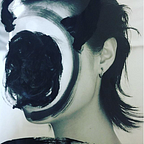The Least Accessible Tourist Attraction in Beijing: Ming Tombs
“How long are you visiting Beijing,” I ask a friend, here to see her long-distance boyfriend from up North in Shenyang. “Two days,” she replies, and I write off seeing her then and there when she tells me she plans on visiting the Great Wall and another attraction. From her hotel in the city center, the closest section of the Great Wall rings in at a six-hour bus trip away.
Even for myself, who has lived in Beijing for nearing a year, I’ve rarely ventured to visit these famous attractions, but on my impending (and temporary) journey back home, I’ve started an attempt, though it’s difficult to find the dedication to spend so long on the travel portion rather than the event itself. Even so, I finally ventured out to the Ming Tombs, all the way towards the end of Changping line in the Northwest of Beijing, past the slums of Shahe and the Tech center Xi’erqi that chokes it from the rest of the city. It’s a journey. I thought since Halloween was coming up, tombs would make a creepy addition to the experience.
Upon arrival, it’s immediately apparent that you are no longer in Beijing, but in a tiny village just outside of it. Taxi drivers beg at the exit of the “Ming Tombs” subway station to take you to all of the sites for 300 kuai or more. In fact, the glaring scar on the face of this journey was pushy cab drivers who followed us from stop to stop. We are huge believers that it’s more entertaining to find our own way, even if we get lost in the process. Still, there is no English on this journey from village to a remote ancient tomb, so some foreigners might have no choice but to go with them if they don’t brush up on their Chinese (maybe take a tour!).
Remote as it is, The Ming Tombs was a historical anomaly. Like many such attractions in Beijing, most of it is rebuilt after having been destroyed by one emperor or another despite now being a 40 square kilometer World Heritage site. Most of the tombs are still closed, with only 3 open to the public, only one of which has been excavated underneath. Admittedly, even that excavation is sparse due to a lack of preservation of the contents considering China’s (even recent) history. Due to the destruction of those materials, further excavation has been forbidden for now, though there is a small museum as well. As common with Chinese historical exhibits, it’s the things that aren’t shown to the public that are most interesting.
Beginning with a 4-mile walk through a path lined with protective animals both standing and bowing as well as military aides carved in stone, this site is framed with well-manicured natural beauty as well as statues and significant tomb gates. This walk is called “Spirit Way”. The animals are meant to protect the spirits that reside here, and everything from the surrounding mountains shielding from dust to the shade of the abundant trees makes this walk a very pleasant and peaceful one.
From the edge of Spirit Way, one must take a bus to the next tomb, as the whole site is spaced out much like everything else in Beijing. Again, there’s not much English to be found, but it’s easy enough to manage with a little knowledge or a map. Dotted between the sites are several small villages, fruit carts, and jewelry makers, though a large line of vendors stays at the exit of every tomb as well to sell tourist tat.
Inside each tomb area was a sensor, though it wasn’t in use like in the previously visited Lama Temple, which is a functioning temple. Instead, they were roped off, though they were very intricate and beautiful. There were also offering tables and even the traditional rack to holster weapons, as they were not allowed inside of the tomb where one was to pay respect.
Despite it being a slightly smoggy day, the views were beautiful, as much of the area surrounding Beijing is. Lush mountains in the autumn with nude persimmon trees, twisted black branches dotted with orange fruits, made this trip worth it for the walk alone. We were able to walk along paths behind the giant tombs and into the mountains that frame Beijing.
All in all, this attraction may be especially worth it if you are near Changping line, and costs anywhere from 40–60 RMB per tomb (around 5.5–6.5 USD at the time of this writing) or a 120 RMB (17.25 USD) pass for three of them. It spans so far and is interesting to explore not only the attraction but the surrounding village areas as well. There are two small museums, one of the underground palace, but again most things are left sealed in their tombs until ever we have the resources and permissions to properly excavate.
*This was originally written October 31, 2018
